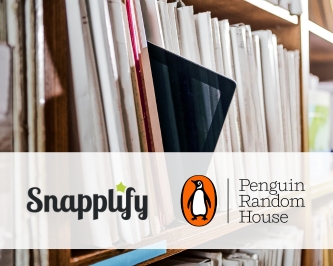Snapplify’s Higher Education Account Manager Penny de la Plain considers how digital library solutions can benefit tertiary institutions
I’ve worked in the publishing industry since 1989. For the past 14 years, as I’ve focused specifically on digital and institutional products in East, Central and southern Africa, I’ve seen how publishers and higher education institutions have been adapting to technological change. Of course, technology brings exciting opportunities – and I truly believe that when used effectively, e-learning has the potential to boost pass rates. But this is not to say that the adoption and implementation of e-learning hasn’t come with particular challenges.
Affordable, easy access to ebooks
In the higher education environment, I’ve observed how both publishers and tertiary institutions have grappled with the question of e-textbook pricing via the library. One of the biggest challenges behind developing a cost structure for digital libraries in the academic environment has been the tendency to apply print pricing to ebooks.
While using a traditional library, with printed books, simply means entering the premises and checking a copy out, the library solution that was initially developed for higher education evolved from a subscription-based model which is used for high-level journals. Not only are subscription prices for these high-rated journals anything from $1 000 to $30 000 a year – a huge amount of money that is simply not realistic when it comes to ebooks – but the journal model allows multi-concurrent access, meaning that the entire campus can effectively read the journal at once for the same price.
While a reference work is usually used by one person (possibly for a year, while they conduct their research) or by multiple people for a short period as it relates to a course, project or other time-limited reason, a textbook is used by the whole class for the whole year. Here, a licensing model with multi-concurrent access would either be too expensive and admin intensive for a library, or would be financially problematic for a publisher who needs volume sales to justify the cost of producing premium products in the textbook sector. Volume sales are necessary to continue to invest in improved and updated content. To address this, publishers often come up with deal-specific, labour-intensive, complicated licence agreements with individual institutions.
The Snapplify Library offering, on the other hand, has simplified this process for both publishers and educational institutions. This option allows a certain number of users within an institution to share a library ebook during the academic year, and for the librarian to control the access and loan period. Once titles have been selected by an institution, the library is also open for use immediately – unlike print libraries, which can involve a lengthy acquisition process of curation, ordering, transport, delivery, categorising and shelving. Students also have 24-hour access and are not restricted to the opening hours of a brick and mortar library building. Ultimately, this solution is a simple lending model (which mirrors the print model for libraries, but with added benefits), and allows institutions to create and manage a digital library easily, effectively and inexpensively.
Bolstering academic success
Of course, easier access to ebooks can only be beneficial to students, and to institutions hoping to improve their pass rates. As the largest ebook aggregator in Africa, Snapplify’s extensive catalogue includes over 240 000 titles from leading local and international publishers. Using Snapplify’s Library, institutions have instant access to textbooks for a variety of tertiary subjects and study areas (including engineering, technology, commerce, humanities, life sciences, physical science, medical sciences, architecture and zoology), making studying – and therefore, passing – easier for students.
To support the course accreditation, every tertiary institution’s library is required to support the courses on offer with specified quantities of research, reference and textbooks. Not only does Snapplify for Education give institutions easy access to and greater flexibility with their choice of digital content, but Snapplify’s Insights – a unique analytical tool – gives institutions the power to monitor content, audience behaviour and usage data. In the library environment specifically, Insights can show whether specific titles are being read or not. Armed with this information, librarians can make informed budgeting choices about their digital offering, including reference books that are consistently being used and disregarding titles that are not being read in favour of other ebooks that students may find useful.
A reliable partner for change
It is undeniable that we all live in an ever-changing world, and if we are to take advantage of the full benefits of technology, we must be able to adapt too. Snapplify is continually adding new tweaks and updates so that the product is growing, adapting and evolving to keep pace with the demands of educators, students and institutions. We’re an African company, with Africa as its primary focus, and we work hand-in-hand with education institutions in emerging markets, making sure that educators get the support that they need to embrace digital learning.
As an e-learning platform, Snapplify encourages reading, collaboration and analysis. We make it easy for tertiary institutions to offer a robust digital library solution to students, while providing usage statistics to validate purchases. These simple and effective solutions make e-learning easier, meaning students are likely to use the platform and have a higher chance of passing.
Email education@snapplify.com to chat about your specific needs and how we can work together.We believe that digital learning is the future. Keep up to date with what we’re doing in education by signing up to our South African or Kenyan mailing lists.



